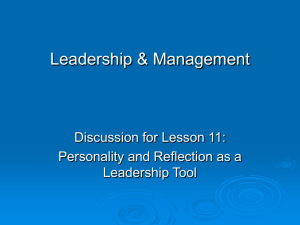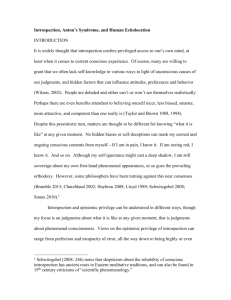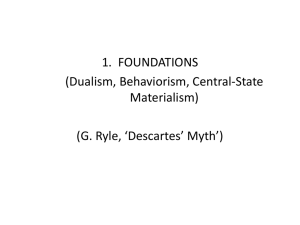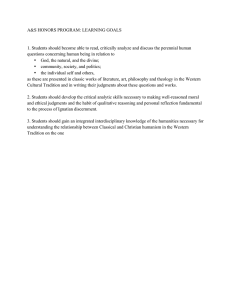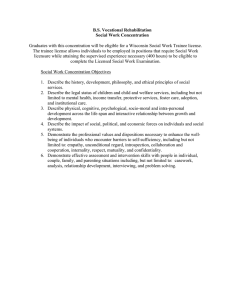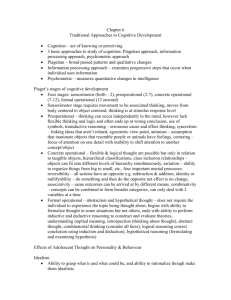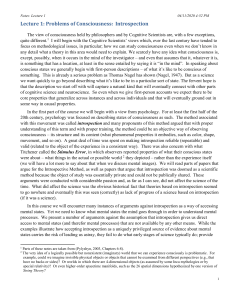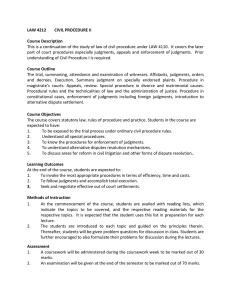Perplexities of Consciousness, by Eric Schwitzgebel. Cambridge, MA: MIT Press,... Pp. xii + 248. H/b £19.95.
advertisement
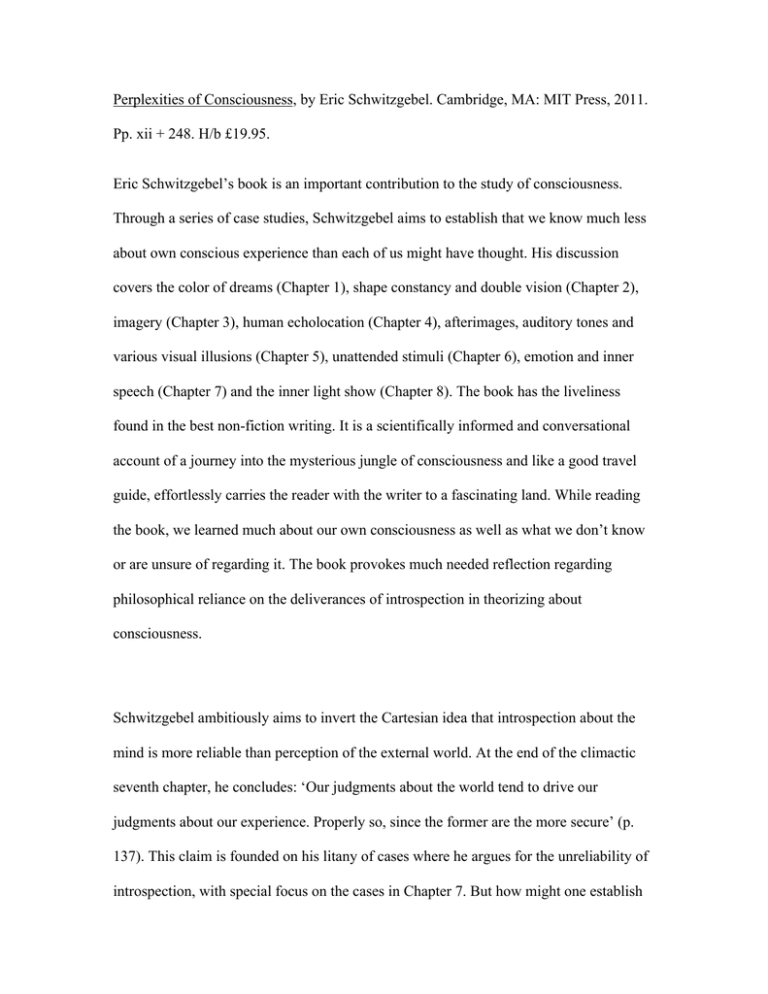
Perplexities of Consciousness, by Eric Schwitzgebel. Cambridge, MA: MIT Press, 2011. Pp. xii + 248. H/b £19.95. Eric Schwitzgebel’s book is an important contribution to the study of consciousness. Through a series of case studies, Schwitzgebel aims to establish that we know much less about own conscious experience than each of us might have thought. His discussion covers the color of dreams (Chapter 1), shape constancy and double vision (Chapter 2), imagery (Chapter 3), human echolocation (Chapter 4), afterimages, auditory tones and various visual illusions (Chapter 5), unattended stimuli (Chapter 6), emotion and inner speech (Chapter 7) and the inner light show (Chapter 8). The book has the liveliness found in the best non-fiction writing. It is a scientifically informed and conversational account of a journey into the mysterious jungle of consciousness and like a good travel guide, effortlessly carries the reader with the writer to a fascinating land. While reading the book, we learned much about our own consciousness as well as what we don’t know or are unsure of regarding it. The book provokes much needed reflection regarding philosophical reliance on the deliverances of introspection in theorizing about consciousness. Schwitzgebel ambitiously aims to invert the Cartesian idea that introspection about the mind is more reliable than perception of the external world. At the end of the climactic seventh chapter, he concludes: ‘Our judgments about the world tend to drive our judgments about our experience. Properly so, since the former are the more secure’ (p. 137). This claim is founded on his litany of cases where he argues for the unreliability of introspection, with special focus on the cases in Chapter 7. But how might one establish this provocative claim? Not by showing that introspection can err, as there are ample cases of perceptual unreliability, but rather by comparing both capacities under similar conditions. We shall return below to Schwitzgebel’s central case in visual experience for inverting the Cartesian idea, namely judgments about clarity in the visual field (Chapter 7), but if perception often drives introspection as Schwitzgebel suggests and as we are inclined to agree, then the reliability of the latter should correlate with the former. Indeed, this seems to be the case. In his informative discussion of Edward Titchner’s training manual for introspection (Chapter 6), Schwitzgebel asks us to introspect whether horizontal and vertical lines in a ‘horizontal-vertical’ illusion (figure 5.3, p. 86) look the same or different length. We found it hard to decide, yet our introspective uncertainty matched our perceptual uncertainty as to the actual relative lengths of the lines. On the other hand, where we have a clear view of a red object, it seems that both vision and introspection will be reliable: if we are reliable in detecting a red object, we are equally reliable at introspecting red qualitative features of experience. While we were struck by indecision and uncertainty in the face of several of Schwitzgebel’s cases, we do not think that he has succeeded in inverting the Cartesian idea. What of cases where introspection is independent of perception of the world? In Chapter 3, Schwitzgebel questions whether we are reliable in judging the vividness of our imagery. People are seemingly confident about such judgments, but Schwitzgebel reasonably asks whether objective measures correlate with these reports. In reviewing the empirical literature for evidence of such correlations, he opts for pessimism and thus, pessimism regarding judgments of vividness. But perhaps there are simpler correlates than he considers. For example, one might expect vividness of imagery in some modality should correlate with activity in the underlying neural representations in that modality, and indeed there is recent evidence that self-reported vividness correlates with activity in relevant cortical areas: vividness of motor imagery invokes increased motor response (J. Williams et al., ‘The relationship between corticospinal excitability during motor imagery and motor imagery ability’, Behavior and Brain Research, 2012, 226, pp. 369-375) and vividness of visual shape imagery yields increased activity in shape selective visual areas (M. Zhang et al., ‘Multisensory cortical processing of object shape and its relation to mental imagery’, Cognitive and Affective Behavioral Neuroscience, 2004, 4, pp. 251259). Our point is not that imaging data confirms that our vividness judgments are correct, but that intelligible correlations between judgments about imagery and objectives measure might exist. We opt for cautious optimism. In assessing the reliability of introspection, it is important to separate two aspects: Intimation: if S has an experience E with phenomenal property P, then S believes that E has P. Infallibility: if S believes that she has an experience E with phenomenal property P, then S has an experience E with P. These claims obviously need refinement. For example, both are plausible only if we add in a clause regarding attention to P in the antecedent (more on this later). Moreover, the issue is about one’s beliefs about one’s current experiences, so reformulations must make clear the temporal index (accordingly, Schwitzgebel’s fascinating discussion in Chapter 1 of changes in opinion during the 20th Century as to whether we dream in color is not directly relevant as it concerns judgments about a past experience and depends on memory, a faculty that itself can be unreliable and prone to distorting influences). We state the claims crudely to emphasize two aspects of introspection. Schwitzgebel questions the reliability of introspection along both dimensions. Intimation and infallibility are plausibly related. If intimation is underwritten by processes whereby a subject forms a belief about her conscious experience on the basis of responding to it, then the nature of those processes will affect the reliability of one’s subsequent beliefs. This seems a widely held view, at least in outline, for many accounts of introspection allow for the possibility of some error. We take it that many philosophers take these processes to involve or consist in a form of attention. Accordingly, the processes underlying intimation involve two features: (a) our attentive access to the property in question and (b) our ability to recognize and categorize that property, something that requires the correct application of appropriate concepts. There are then two potential sources of error in introspection: failure of attention and failure of categorization. This is nicely illustrated in Schwitzgebel’s discussion of emotion (Chapter 7). We are familiar with cases where we feel irritated yet become aware of it only when a friend queries our brusqueness. So, we are not initially attentive to it. We might then wonder: is this feeling just irritation or is it anger? So, we are not always certain how to categorize that feeling. Failure to apply the appropriate concepts in introspection is central in the insightful discussions of shape constancy in Chapter 2 and human echolocation in Chapter 4. Consider looking at a tilted penny. While most seem to agree that the penny looks circular (as it is), it has been vigorously debated whether the penny also looks elliptical. As Schwitzgebel notes, the disagreement suggests that someone is probably wrong about an obvious feature of visual experience. But what precisely is the failure? Almost everyone agrees that there is a phenomenal difference between seeing a titled and seeing an untilted penny. The parties differ only in how they categorize it. Similar points apply to human echolocation. Everyone hears a difference between walking into a closet, a long hallway or a concert hall, but should we categorize this as hearing silent objects and their properties, as Schwitzgebel suggests? We agree that the disagreement in such cases poses a problem for certain claims of introspective infallibility. Nevertheless, the examples may not undercut certain formulations of intimation, for subjects are aware of a phenomenal difference in each case even if they do not categorize it consistently. The role of attention in coming to firm and reliable judgments seems to be quite general, and two potential failures in attention are salient: (a) we fail to attend to an experiential property but can attend to it once directed to do so, and (b) even after directing attention, we cannot adequately attend to the property to establish firm beliefs about it. Consider first the former. Schwitzgebel’s book is engaging in part because it discusses aspects of our phenomenal experience that we tend not to attend to and often overlook. On a plausible reading of intimation where attention is incorporated as the basis of forming beliefs about experience, however, many of Schwitzgebel’s cases do not provide counterexamples to it since in many of his cases, it is plausible that attention is not appropriately deployed and so we fail to notice the relevant properties. This seems to be what is happening in Schwitzgebel’s discussion of the area of clarity in the visual field. While it may be the case that when asked, many people will claim that visual acuity in the visual field is fairly uniform extending from the point of fixation (and hence the fovea), this is a mistake. Fix your eyes on THIS. Now do it again while attending to words at various distances from the “THIS” without moving your eyes. We think you will quickly see that acuity falls off quite noticeably as nearby words will look blurry. So long as we deploy attention carefully, we can correct our initial mistaken judgments about experience (note: in respect of this example as one of Schwitzgebel’s central cases demonstrating the relative unreliability of introspection versus perception, it seems to us that similar problems arise in perception: where you fail to attend carefully, you tend to fail to perceive accurately). Throughout the book, Schwitzgebel shows us that when our attention is focused, we do notice relevant features regarding consciousness. How else could we follow his discussion? Of course, acknowledging the role of attention leaves the question about differences in how subjects categorize the phenomenal properties they can attend to. What we can say, however, is that with proper deployment of attention, we know more about our experience than Schwitzgebel seems to allow even if we know less than the ‘Western Philosophical Tradition’ (p. iv) has held. What then of variability in categorization? This may be because some features are difficult to attend to and hence, difficult to characterize, leading to unreliable beliefs about them. Consider vision and suppose that you are trying to judge the fleeting colors of a soap bubble as it is blown around by the wind. It will be hard to impossible to keep your visual attention focused on the bubble or its color. Consequently, your judgments about the soap bubble’s color and the time course of its changes will be unreliable or unstable (Schwitzgebel makes some remarks in this direction, p. 136). The following thus strikes us as a plausible hypothesis. The Attention Hypothesis Beliefs about a current subject matter, object or feature X tend to be unreliable or unstable if you are unable to keep your attention focused on X. This hypothesis, we suspect, can explain many of Schwitzgebel’s cases. While he claims that we know little about obvious features of conscious experience (p. iv), many of his cases strike us fairly subtle features of consciousness in the way the fleeting colors of the soap bubble are subtle features of the world. Some of this is due to difficulties in locking attention to a fleeting target, some due to difficulties in discriminability. For example, there is the dynamics of the inner light show with eyes closed (Chapter 8), hearing silent objects, their distance and texture from echoes (Chapter 4), the dynamics of color shifts in afterimages, the perception of difference tones, and as noted above, the subtle difference of line length in various illusions (Chapter 5). We would expect difficulty in maintaining attention on these features, so the attention hypothesis would predict our judgments to be correspondingly unreliable or unstable. The Attention Hypothesis can keep hold of the idea that ceteris paribus we are reliable judges of those aspects of our phenomenal experience we can easily attend to. This prediction seems to be borne out. We have already noted judging that one has a qualitatively red experience on the basis of introspecting one’s experience of a red object in clear view. Or consider a sudden cramping in one’s calf or a tune that spontaneously pops into one’s head, both which capture our attention and lead to reliable judgments. The reliability of introspection seems to track how well we can attend. The attention hypothesis also shows that even widespread introspective error is compatible with fairly close approximations to a plausible reformulation of infallibility. As a start consider that the unreliability of visual beliefs about color found in the soap bubble case would convince no one that vision in general is unreliable. This is because mistakes due to deficiencies in attention are naturally understood as mistakes in the employment of a capacity without showing that the capacity itself is unreliable or otherwise epistemically deficient. Because of this, the number of introspective mistakes Schwitzgebel categorizes may be compatible with the claim that introspection yields certainty when properly employed just like the claim that deductive reasoning yields certainty is arguably compatible with the obvious fact that people make many mistakes when inattentive in deductive proofs. If introspection delivers truths as well as deductive reasoning preserves them, no Cartesian would cringe. As Malebranche noted, ‘The mind's attention and application to our clear and distinct ideas of objects is the most necessary thing in the world for discovering what they really are’ (The Search after Truth, Cambridge: Cambridge University Press: 1997, p. 79). If mistakes are explained on the basis of a failure of attention, many interesting questions arise: what is the relationship between introspection and attention? How do failures of attention impact the epistemic value of introspection? What exactly is the epistemic role of attention? Why and how is it connected to the basic belief forming methods themselves and to the reliability of judgment? Indeed, Schwitzgebel’s book helped crystallize for us skepticism of casual talk of attending to phenomenal properties. What exactly is it to attend (properly) to our own conscious experience? Can we really do this? What account of attention is at play here? An important achievement of Schwitzgebel’s book is to force the defenders of introspection think hard about these issues. Department of Philosophy Sebastian Watzl Harvard University Emerson Hall 25 Quincy Street Cambridge, MA 02138 USA Center for the Neural Basis of Cognition Carnegie Mellon University 5500 Fifth Avenue 115 Mellon Institute Pittsburgh, PA 15232 USA Wayne Wu

